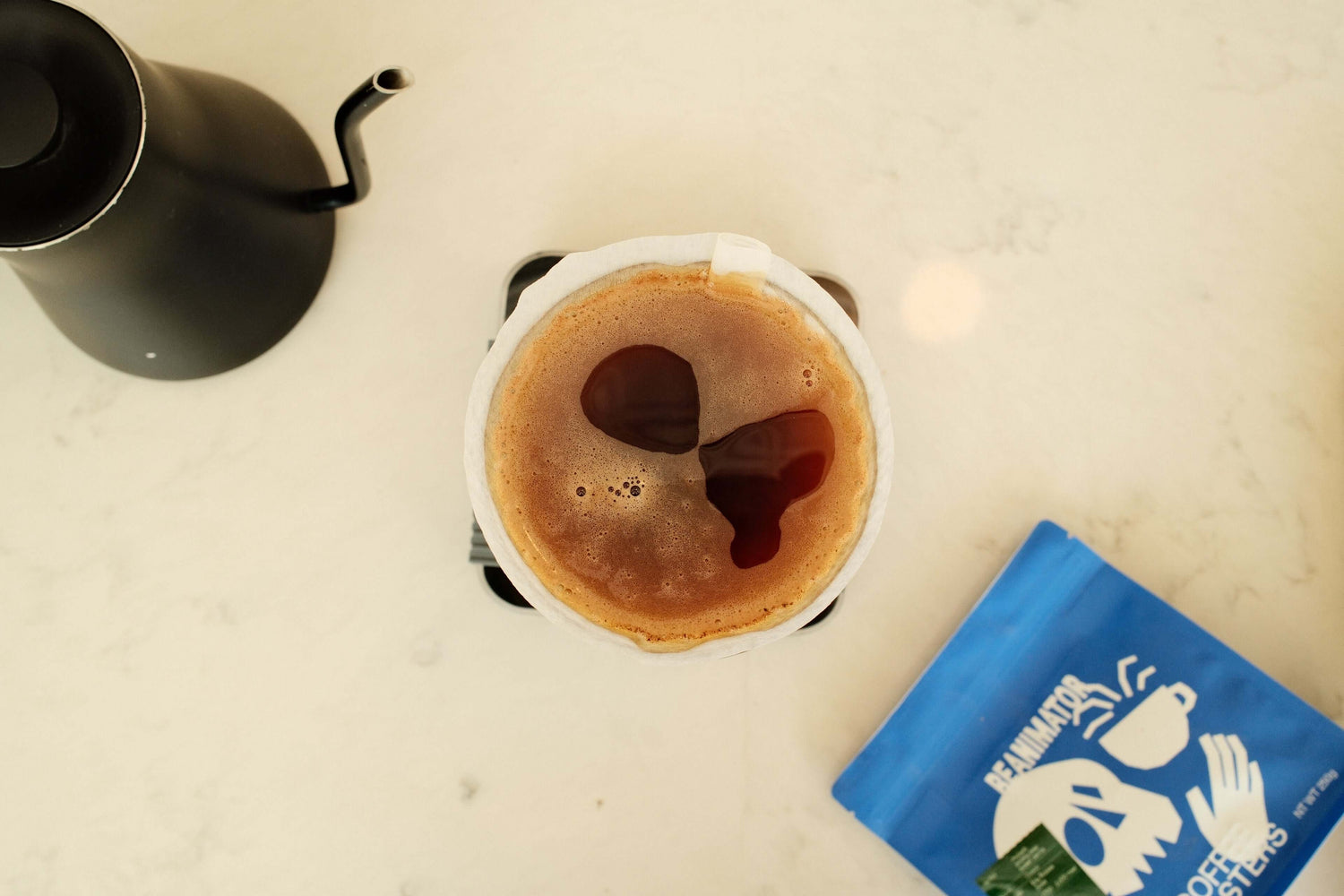As the warmer weather rolls in, many of our customers ask us how to make iced coffee at home. They love the iced coffee from our cafes but haven't quite nailed a method for home brewing that's both easy and delicious. Brewing iced coffee might seem simple, but it can be tricky to cool your favorite single-origin coffee or blend while maintaining its flavor.
Here’s our guide to help you make iced coffee at home.
Popular Methods for Making Iced Coffee at Home
Cold Brew Recipe
One of the most popular methods for making iced coffee is cold brewing. The benefits of cold brewing include consistency and ease of use. Here's how to make cold brew iced coffee:
- Add Coffee: Use coarsely ground coffee.
- Add Cold Water: Combine coffee and cold water. We think a ratio of 1:8 works best. So use 1g of coffee for every 8g of water that you use.
- Steep: Let it steep for 12-24 hours.
- Filter: Strain the coffee to remove the grounds.
- Enjoy!
Cold brew coffee is often syrupy, very sweet, and extracts deeper sugars from the roasted coffee. However, one potential downside to cold brew is that because you're extracting the coffee in cold water, the coffee is not as soluble, so you won't extract as much of the nuance from a coffee. This can be a bit detrimental if you're brewing a single origin coffee where you want to taste more of the terroir or character of a coffee. If that's the case, you may want to brew with the...
Flash Brew Iced Coffee Recipe
Flash Brew Iced Coffee is the method we favor in our cafes and recommend most often for making iced coffee at home. Flash brew involves brewing coffee with hot water directly over ice, preserving the coffee's full flavor. This allows you full extraction with the hot water, while instantly cooling the coffee as it hits the ice, locking in those flavors. This is a great method for brewing light roasted, single origin coffees. The brews are often light bodied, floral, and fruity. Here's our recipe:
Ingredients:
- 83g fresh, whole bean coffee
- 600g hot water
- 600g ice
How To Make Flash Brew Coffee:
- Measure Coffee: Start by measuring 83g of fresh, whole bean coffee.
- Prepare Water: Fill your coffee maker’s water reservoir to the 4-cup mark (600g of water).
- Prepare Ice: Fill your carafe with 600g of ice.
- Grind Coffee: Grind your coffee slightly finer than you would for a normal batch of hot coffee, generally about 2 clicks finer than your average hot drip grind.
- Brew: Brew the coffee directly over the ice in your carafe.
Once the brewing is complete, swirl the coffee vigorously or transfer it to a pouring carafe like a Chemex or glass pitcher, and serve the coffee over ice.
Tips for Perfect Iced Coffee
- If your iced coffee lacks definition, try adjusting the grind size.
- Always use fresh, high-quality beans for the best flavor.
By following these methods, you can make iced coffee at home that’s sweet, clean, and full of character. You can scale this brew to any size or use any brew ratio you like, just remember to halve your total water amount, and instead use half as ice in the carafe.
If you have any brewing difficulties or questions, feel free to get in touch with us. We're happy to help you master how to make iced coffee at home!


